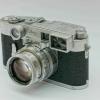Search the Community
Showing results for tags 'elmar'.
-
In my collection is a puzzling sunshade of telescopic design. It has settings marked for 3,5cm/ 5cm/ 9cm and 13,5cm. Plus engravings for Elmar and Hektor. See the next slides:
- 16 replies
-
-
I have a 1936 IIIa (s.n. 184223) that is in need of a lens, and I am now in a position to purchase one. I am leaning towards an f3.5 Elmar, as I think it complements the design of the camera beautifully both in compactness and in general appearance. The other lenses that are possibilities look a bit heavier and some even a bit too modern (even though some of them are not) for an 85 year old camera. I do have some points that I would appreciate comments on from those who know more about things Leica than I do, before I part with my cash. Firstly, condition. Quite a few lenses of this age have either dust or haze in the optics, and others have light marks. Would I be correct in assuming that dust or haze (provided the haze is not excessive) could be fixed with a CLA, as could a stiff aperture ring or focusing ring, but marks would generally not go away? Secondly, coatings. I see that, as a rule, Pre-War lenses are clear, and Post-War lenses are coated, and I understand the basic reasoning behind coating lenses is to cut down internal reflections but, in lenses of this quality, is there really much of a difference between the two? As for the lenses that I’m looking at: Elmar f3.5: My preferred option, as it is so light and compact and just looks so right on a Barnack Leica; Elmar f2.8: Aside from the extra f-stop, is there any reason for preferring this over the f3.5 Elmar? I find it does not have quite the same visual appeal as the f3.5 Elmar, but it could be useful in low light situations. Summar f2: Maybe another lens to consider. Again, not quite the same visual appeal as the f3.5 Elmar, but it could also be useful in low light situations. Summitar: From what I can see, it appears to be an updated and improved version of the Summar. Compared with the Elmar, and even the Summar, it looks a trifle bulky (yes, I know it isn’t really). Summicron: I’m not so keen on this one, as I find the appearance of the earlier lenses more appealing. I would also prefer to fit my camera with a lens that’s a bit closer to what it originally had. I have heard that the front element is made of an unusually soft glass, which means that these lenses are often badly scratched. Is this so? Thank you in advance for helping a newcomer to the world of Leicas.
-
Gives the term "red scale elmar" a whole new meaning! Distance seems to be in both feet and meters? I guess you can get these "reproductions" in what ever color you want.
-
I love shooting with my Nickel Elmar 50mm f/3.5, but I've always wondered the exact year it was made. It has no visible serial number inside or out. There is a 0 stamped on the bottom and another 0 beside the focus knob. The number 4 is stamped under the focus knob. The front shows: Leitz Elmar 1:3,5 F=50mm The distance marks are: mtr 2, 2.5, 3, 4, 5, 7, 10, 20, infinity, 1, 1.25, 1.5, 1.75 The aperture stops are: 3.5, 4.5, 6.3, 9, 12.5, 18 Any sleuths out there want to hazard a guess for the year the lens was made?
-
Most of us seem to be photographers as well as collectors. Show me your favorite lenses, old and new alike. I like the Noctilux range for the extreme apertures, but I prefer the Summilux range for the best speed:size/weight ratio. Here’s a Summilux gathering of 21, 24, 28, 35, 50 and 75mm. All in black.
- 127 replies
-
- 14
-

-
Hey guys, I'm currently setting up a Leica Screw Mount kit. I will be buying a CLA'd Leica iii with a new splitbeam mirror. The whole kit is planned to be used for a gap year in New Zealand and therefore it needs to be small but still affordable because I'm still a student. Now I can't decide between a probably uncoated but CLA'd Ltm 5cm Elmar f/3,5 and a Nikkor 5cm f/2. The Elmar is incredible small which is amazing for travalling while still having a good quality as a like. And it fits in the ever ready case. BUT I really like using filters and it is very hard to use them on the Elmar because it needs those special A36 filters and I need to put them off everytime to change the aperture which is still hard without the filter. The latter on the other hand doesn't have the advantage of being able to be pushed inside the body to become very small but it uses normal filters and it isnt hard to set the aperture with it. But it does not fit in the everready bag (or am I wrong?). The question is now which one is better? How about the optical quality, I have no ressources to exactly compare them. Greetings
- 11 replies
-
- ltm bayonet
- elmar
-
(and 1 more)
Tagged with:
-
Hi, recently I had designed and built by 3D printing a longer Endcap for retractible lenses. Basically it has an internal depth of 23mm, which i think will fit most of the M mount retractible lenses. I designed this Endcap for my 50mm Elmar F2.8 lens. It is better to use a good 3D printer. I printed this Endcap using my Craftbot Plus printer at " 0.100mm " layer height, with 15% infill. I printed these Endcaps on Glass Bed with Dimafix 3D printer glue. The result is mirror smooth bottom. You can use PLA or PETG. This is a very clean design. There is no oozing to be cut except the last one when the nozzle started to go into Home position. You can use any colors you want. I did not take a picture of the Endcaps today but i will add that to the Dropbox download folder. In this folder you can find a stp file and a stl file suitable for 3D printing. You can revise the design by loading the stp file. A computer rendering is included. Tomorrow evening I will put actual pictures into this downloadable folder. This is the link: https://www.dropbox.com/sh/qsjcj2srlp3moea/AAD6QWKuZBCtYeihflJ3ZzIoa?dl=0
-
The person I bought it from said they bought it from a seller in Japan a few years ago. And they got the lens CLA'd (Clean, Lubricate, Adjust) this year. Serial Number: 125167 It weighs 111 grams when there's no caps on it. It has "50mm" instead of "5cm" written on the front of the lens, which it would indicate that it's an earlier model I believe. There's an "o" on the barrel by the focus lever, which would indicate that this is a standardized lens mount. Underneath the focus leaver there's the number 5 (as shown in the picture), I don't know what this means. I think the focus lever is at the 11 o'clock position? I'm not sure how to tell. I tested it and found: 105 cm / 41 inch closest focusing distance. The rear plate has distances in feet. I don't know if Leica sent certain countries a different plate, or if it was replaced by a distributor, or if it was replaced in the decades after it was first sold. Interestingly enough there's no "Germany" or "Made in Germany" that I see on other exported lenses. Full album with more more picture and in higher quality: https://imgur.com/a/bhQcwHI Is this lens legit? Was the rear plate with "feet" replaced by a 3rd party? And is this really 1931 or 1932?
-
Hallo liebe Forumsmitglieder, ich habe eine Frage zu den abgebildeten Objektiven, 1x Vario-Elmar-R 1:4.5/75-200, Nr. 3005278 und Vario-Elmar-R 1:3.5/35-70 E60 Nr.3286640. Obwohl ich reichlich recherchiert habe weiß ich nicht ob diese bei Nutzung der Leica R3 und R4 Einschränkungen unterworfen sind. Ich sehe auch nicht ob das nun 1,2 oder 3-cam-Objektive sind, alle Bilder die ich mir angesehen habe verwirren mich. Kann ich damit normal auch im Automatic-Modus (Leica 3) fotografieren? Messe ich die Belichtung bei Arbeitsblende und stelle diese dann ein? Halte ich dann den Schalter und drücke dann auf den Auslöser oder bleibt die Einstellung drinnen? Oder verlasse ich mich einfach auf die Anzeige im Sucher? Ich möchte ungern einen Film verballern nur um es selber rauszufinden. Ich fange gerade erst wieder nach 50 Jahren an analog zu fotografieren. Begonnen hatte ich mit einer schönen manuellen Zenith aus den 70ern. Weiß jemand Rat? Hier die Fotos:
-
Hey Everyone, I hope I have the right forum here. I found this Ernst Leitz lens for next to nothing back at my home town. I cannot seem to find a lot of information about it and what cameras it was produced for. Also what it's value might be? Focusing ring is a tad rough when twisting but the optics are clean! Serial Number: 1037673 I would love to hear more about it!! Attatched are some images. Cheers Julian
- 2 replies
-
- ernst leitz
- elmar
-
(and 1 more)
Tagged with:
-
Hello What kind of ring adapter do I need for M2 to match old uncoated version of nickel elmar 3.5 Pawel
-
Hallo Freunde der analogen Fotografie, seit einer Weile fotografiere ich nun schon analog, erst mit einer Canon AE1 und jetzt mit einer Olympus OM1, da ich vollmechanische Kameras mehr mag, so kommt es auch, dass ich mir jetzt eine alte Leica zulegen will. Da mein Budget als Schüler begrenzt ist und ich Schraubleicas bald schöner als dass M-System finde, habe ich meine Suche auf die IIIF, IIIC und IIIG eingegrenzt, wobei die IIIG auch schon fast zu teuer ist. Dazu soll es noch ein schönes Elmar, Summitar oder sogar Summicron sein. Da ich Händlern generell mehr vertraue bin ich auf 2 Angebote gestoßen: Leica IIIC mit Summitar 50mm f/2 und Beli für 500€: https://www.meister-camera.com/de/gebraucht/5297/leica-iii-c Leica IIIF VLW mit Elmar 50mm f/2 für 445€: https://www.leica-store-muenchen.de/de/gebraucht/15166/leica-iiif-vlw-3550mm Ich weiß wirklich nicht, welches Angebot ich nehmen soll, da beide Kameras ziemlich gleich sind (Der Blitzanschluss der IIIF ist mir egal). Die IIIC hat halt noch einen Belichtungsmesser und das bessere Objektiv für Naturlichtfotografie, jedoch, hat Sie kein Rückgaberecht, der Zustand ist schlechter (das Chrome blättert ab), sie hat Selbstauslöser (eigentlich ein cooles Feature, was jedoch kein Muss ist) und ich habe von vielen gehört, dass es nur selten ist, dass man ein Summitar ohne Kratzer findet, da dass Glas sehr weich ist. Objektiv und Kamera sind beide von ca. 1949/50. Die IIIF hat an sich ein (licht-)schwächeres Objektiv (ist das ein großer Unterschied?), keinen Belichtungsmesser (welchen ich eigentlich nicht wirklich brauche, jedoch ist dieser ganz nett) und ist ein Umbau (was nicht unbedingt schlecht ist?). Jedoch hat der Body einen besseren Zustand, die Kamera hat ein Rückgaberecht und ist 50€ günstiger. Der Body ist auch so von 1949/50, von dem Objektiv kenne ich aber Jahr, was auch bedeuten könnte, dass es keine Vergütung hat. Ich gehe bei beiden Kameras davon aus, dass ich sie noch justieren lassen muss, dazu will ich sie für 120€ zu Oleg Khalyavin schicken, hat da jemand Erfahrung? Schon mal vielen Dank im Vorraus für eure Antworten! Max
- 59 replies
-
- kaufentscheidung
- schraubleica
-
(and 5 more)
Tagged with:
-
On a dull cold spring day this little gem arrived in the post; A Nickel 35mm f3.5 Elmar body in a chrome 11 o'clock focussing mount. No infinity catch. No visible serial number. The long focus stop screw looks nickel. The mounting flange is smaller than the camera body lens mount. I have read about that on the forum, but thought it only related to early interchangable 50mm Elmars. Both parts have a "O" for standardised. It couples with the camera rangefinder and the distence scale seems to match the rangefinded distence, the scale goes down to 2 feet. The focussing cam on the back of the lens shows machining marks and looks quite different from an ordinary pre-war 35mm Elmar that I have. Could it have been converted from an un-coupled model? Maybe an "unofficial" conversion using mismatched nickel and chrome parts, both early?
- 28 replies
-
- 2
-

-
Hi! My Leica M10 and some lenses got stolen yesterday in Gothenburg. If anyone sees them, I would be grateful. To moderator, if this is the wrong place to post, please move it. In the bag was: 3824764 Leica Elmarit-M 90 4081227 Leica Elmar-24-M 4112250 Leica Summilux 35 ASPH 5152626 Leica M10 Black Leica E46 filterx2 (on the lenses) Leica M10 Battery Charger for Leica M10 HP Zbook 2017 I will also report to Leica. Regards, Joakim
- 10 replies
-
- m10;
- stolen lost
-
(and 6 more)
Tagged with:
-
I bought a IIIf body and, separately, a collapsible Elmar 3.5/50 lens (pre-1946). Both appear in excellent condition. The lens is a bit stiff in pulling out and locking. When I focus, though, the lens tends to turn with the focusing ring. When I hold the lens and try to turn the focusing ring separately, it blocks. I have no (recent) experience with collapsible Elmars, so I wondered if this is as it should be or not.......
-
Hello all: I am beginning to explore the world of old and older Leitz lenses for my M cameras. I recently purchased a 1935 50mm f3.5 Elmar (uncoated LTM, used with a LTM to M adapter ring) and just got a 1955 50mm f2.0 LTM Summitar (again, LTM with LTM to M adapter). I just saw a SOOTF adapter for sale, advertised as allowing the use of filters for the Summitar on the Elmar. Is that so? Also, can "swing-out" polarizing filters be used on the Summitar? I have one for my Summicron (V3) and another for my Summilux (V1 - 1959). Were any made for the Summitar? Thanks to all of you for your help. Guy
-
Choosing the right Leica M lens can be a daunting and challenging thing, given the very rich variety in M focal lengths, lens character, maximum apertures, size, optical design etc. M lenses span many decades of evolution, with major milestone designs from two influential eras: Mandler’s classic, filmic look, and Karbe’s modern, technically optimized designs. There is also a huge variety of other choices. This guide highlights some of the key aspects of choosing the right M lenses - focal length, character, speed, form factor, price and rarity, helping you find the ideal lens for your style and needs (hopefully). I have created a checklist of five questions to ask before the purchase: WHAT FOCAL LENGTH DO I WANT? Current M lenses offer a range of focal lengths from 16mm super-wide to 135mm telephoto, with classic street photography favorites being 28mm, 35mm, and 50mm for their versatility. Portrait and telephoto options like 75mm, 90mm, and 135mm bring subjects closer and tighter, though focusing accuracy can be challenging with a rangefinder (EVF to the rescue where applicable). Of course some prefer wide and ultra wide lenses as their daily driver and many good and useful combinations between focal lengths have been suggested - 35mm + 75mm, 24mm + 50mm + 90mm, 21mm + 35mm etc. WHAT CHARACTER SHOULD THE LENS HAVE? Leica M lens character differs significantly between two major milestones - the Mandler era and the Karbe era. Walter Mandler designed lenses, known for their softer pre-aspherical "character" rendering and sometimes signature glow, emphasize color rendition and tonal transitions, often using classic glass types to create a unique 'Leica look.' Mandler’s lenses (like the Pre-ASPH 35mm Summilux) are loved for their dreamy, filmic qualities. Peter Karbe’s lenses later introduced APO (Apochromatic) and ASPH (Aspherical) technologies, delivering sharpness across the frame and reducing aberrations, like in the 35mm and 50mm APO-Summicron. These lenses prioritize technical perfection and "clinical" sharpness with minimal optical flaws and are (as per their designer) supposed to be used even wide open without any major quality loss issues. WHAT MAXIMUM SPEED DO I NEED? Usually the hustle is between f/2 and f/1.4 as common choices for their balance between light-gathering and size, keeping in mind that every f/1.4 lens is also a f/2 lens, but not vice versa. Fast lenses like the Noctiluxes (f/0.95 or f/1.25) offer ultra-shallow depth of field and excel in low light but are generally larger, bulkier, heavier, and more challenging to focus. Summilux (f/1.4) lenses balance high speed and portability, while Summicron (f/2) lenses prioritize compactness and are versatile enough for most lighting conditions. Some users do not need the speed at all and are happy with f/2.8 or even f/4. IS FORM FACTOR AND SIZE IMPORTANT TO ME? The size of Leica M lenses ranges from ultra compact (such as the 28 summaron, 40 summicron, 28 elmarit, 35mm Summicrons I- IV or collapsible 50mm Elmar) to larger, heavier options. Mandler-era (and earlier) lenses are often more compact due to simpler optical formulas, while modern ASPH and APO lenses can be bulkier due to their complex elements, but this is not a particular rule. Many Leica M photographers favor compact lenses for the M system's signature light weight and unobtrusiveness and there are not that many choices of those in the latest modern line-up, which is a shame. HOW MUCH AM I PREPARED TO PAY? Prices of Leica M lenses have always been high. Used ones vary greatly depending on rarity, internet trends, special edition status and demand. Some have always been and others have just recently become collectibles, with prices rising through the roof. The rule of thumb for new lenses is the slower the lens, the cheaper it should be. If you are after a special, limited edition lens like a silver wide angle 28mm summicron, black paint 50mm noctilux or AA double aspherical 35mm summilux be prepared to pay the premium. No new lenses currently available as regular editions are rare and there are always some "sleepers" and bargains to be had. Please feel free to comment and add your observations. What are the perks you encountered when buying a M lens? Is the process confusing? Are they overpriced for what they offer?
-
My article on some of the highlights is here. I like item No 15. What is your favourite? https://www.macfilos.com/2024/09/25/sixth-wetzlar-camera-auction-october-12-is-the-red-letter-day-for-collectors/ William
- 9 replies
-
- 8
-

-

-
- wetzlarcameraauctions
- lars netopil
-
(and 7 more)
Tagged with:







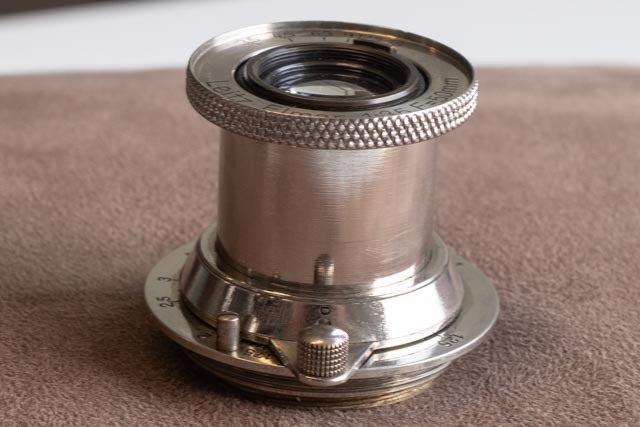


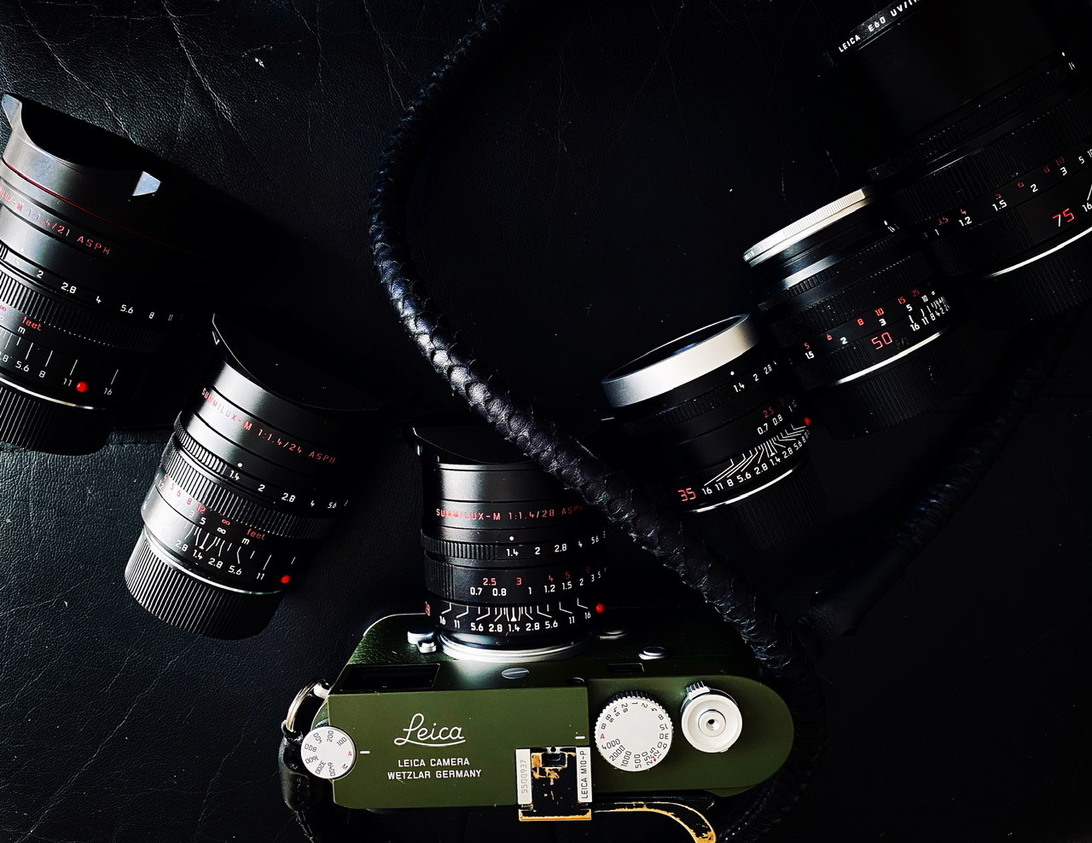



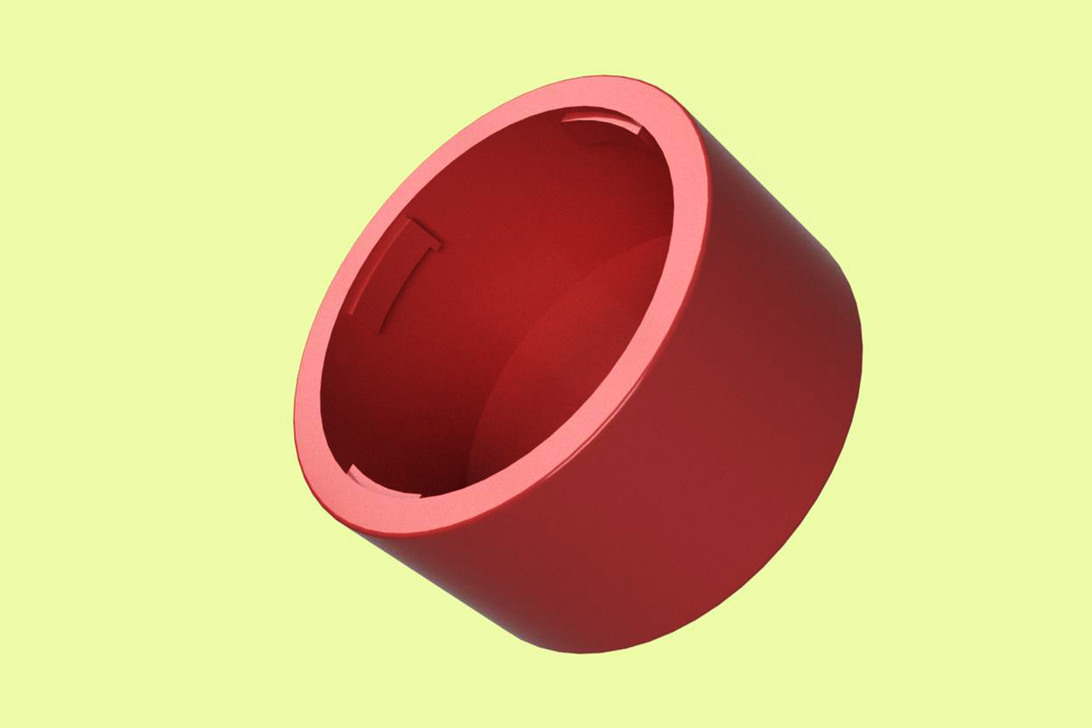
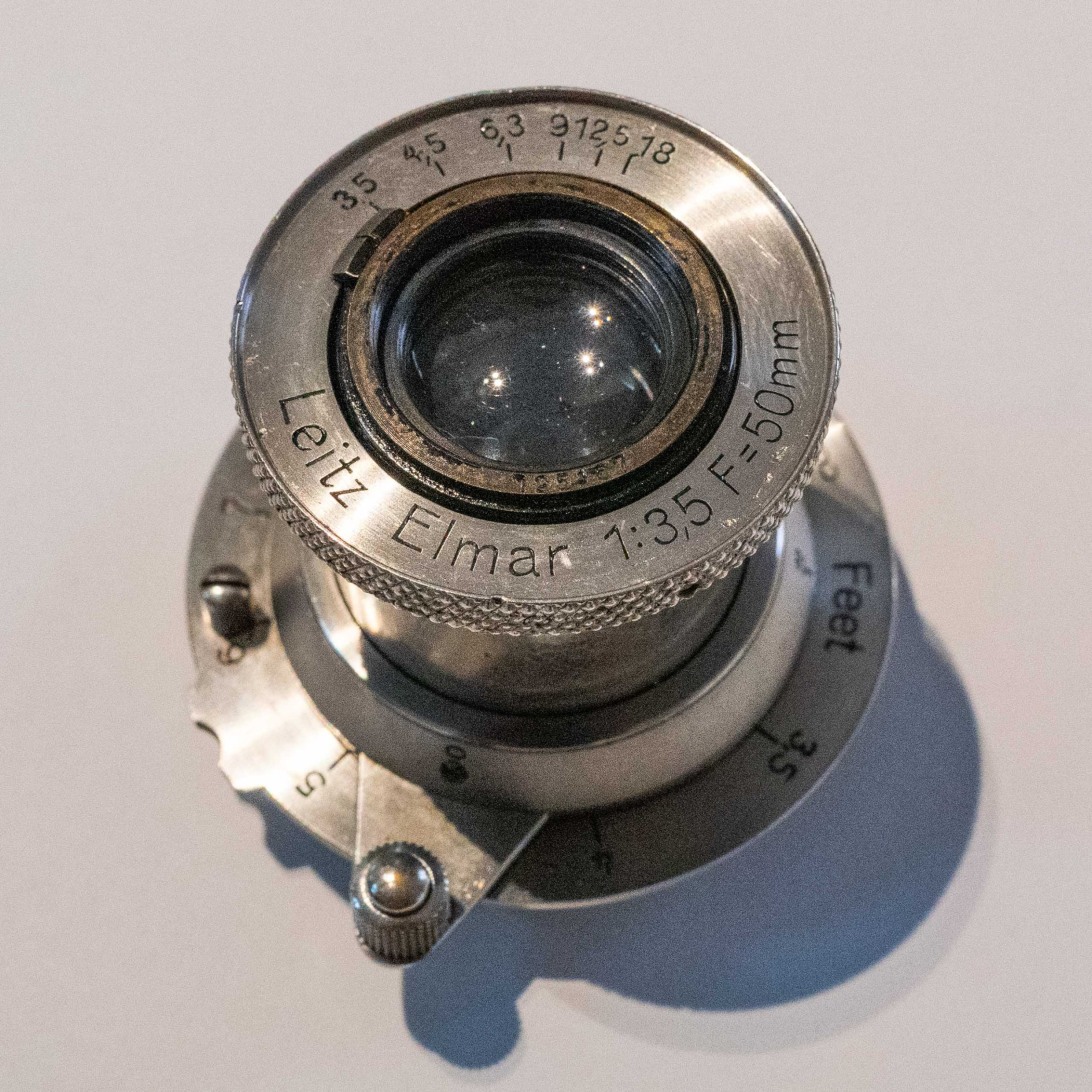





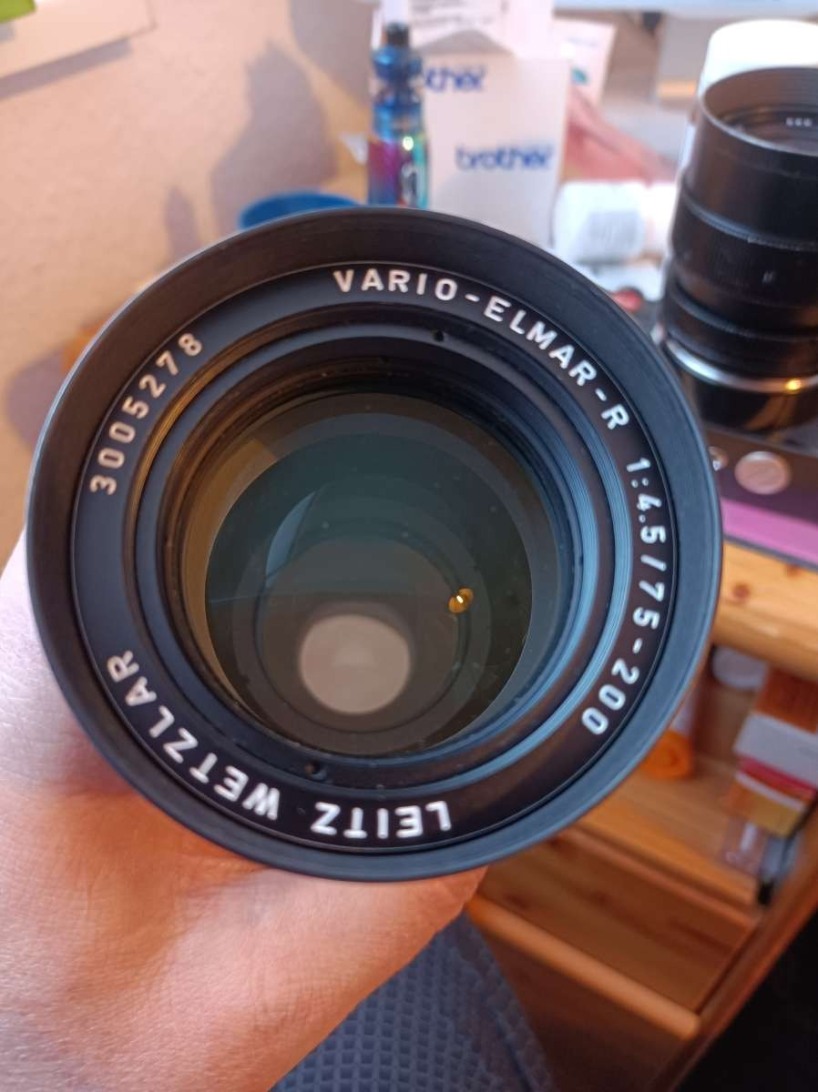
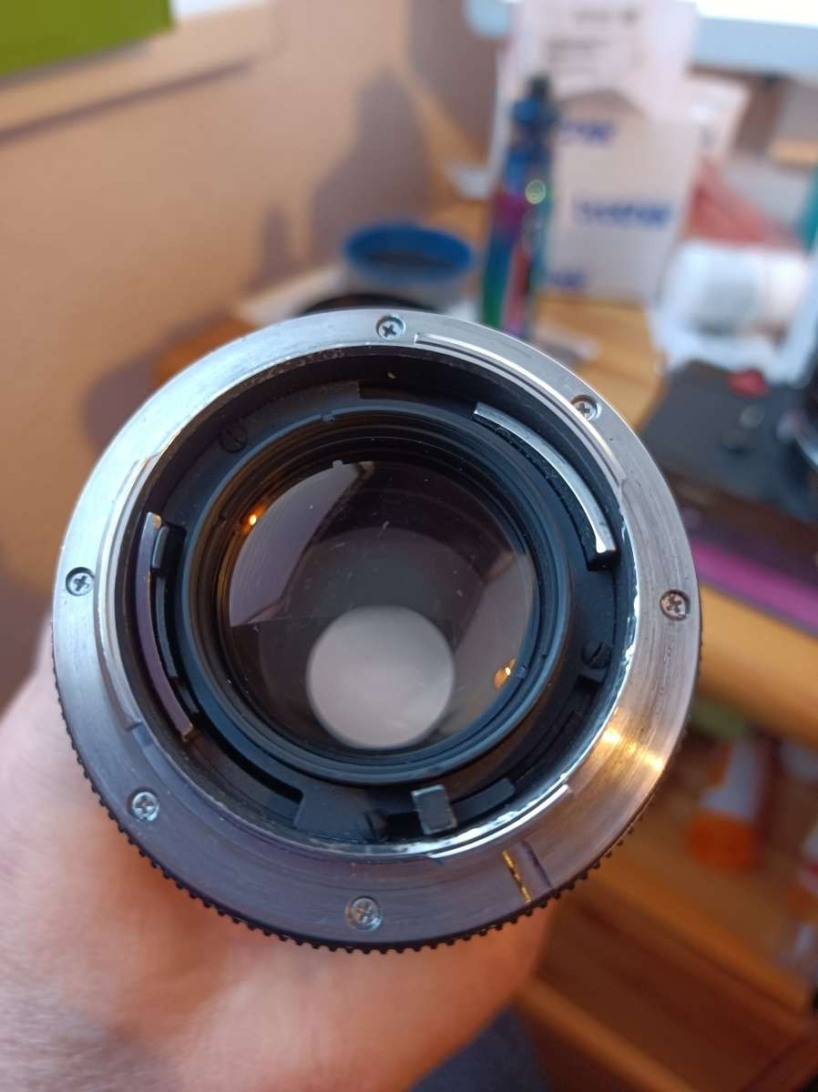
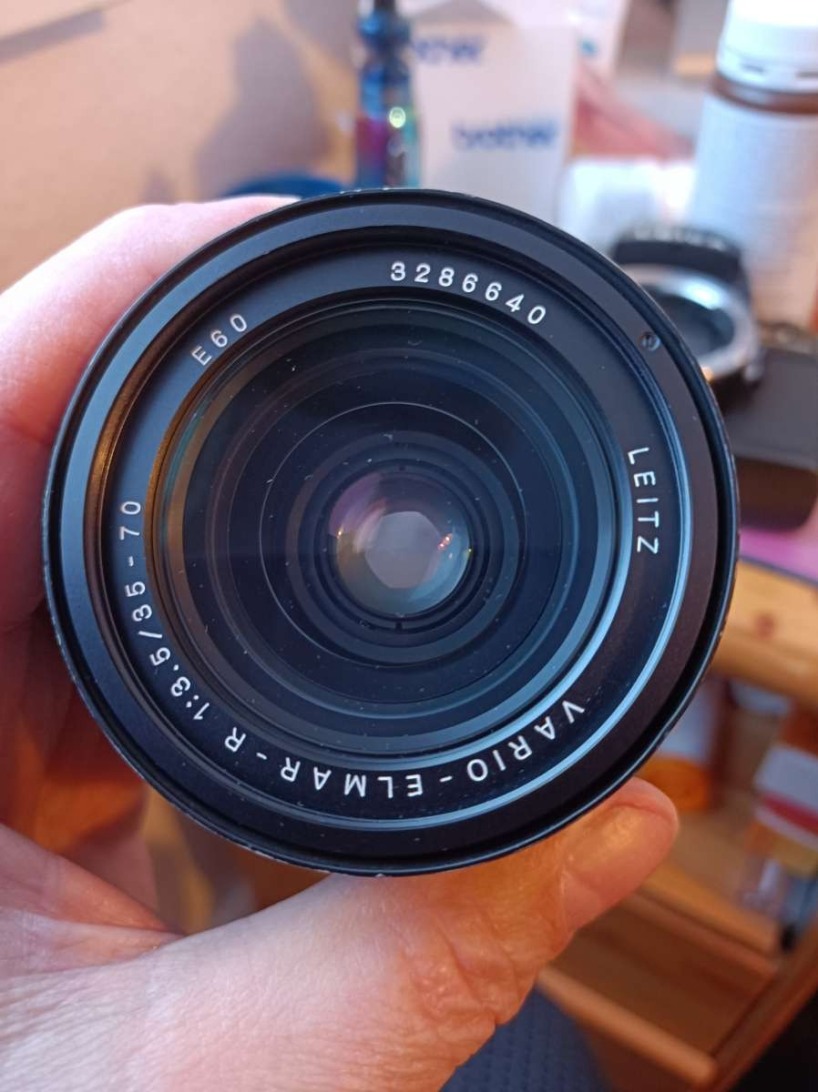
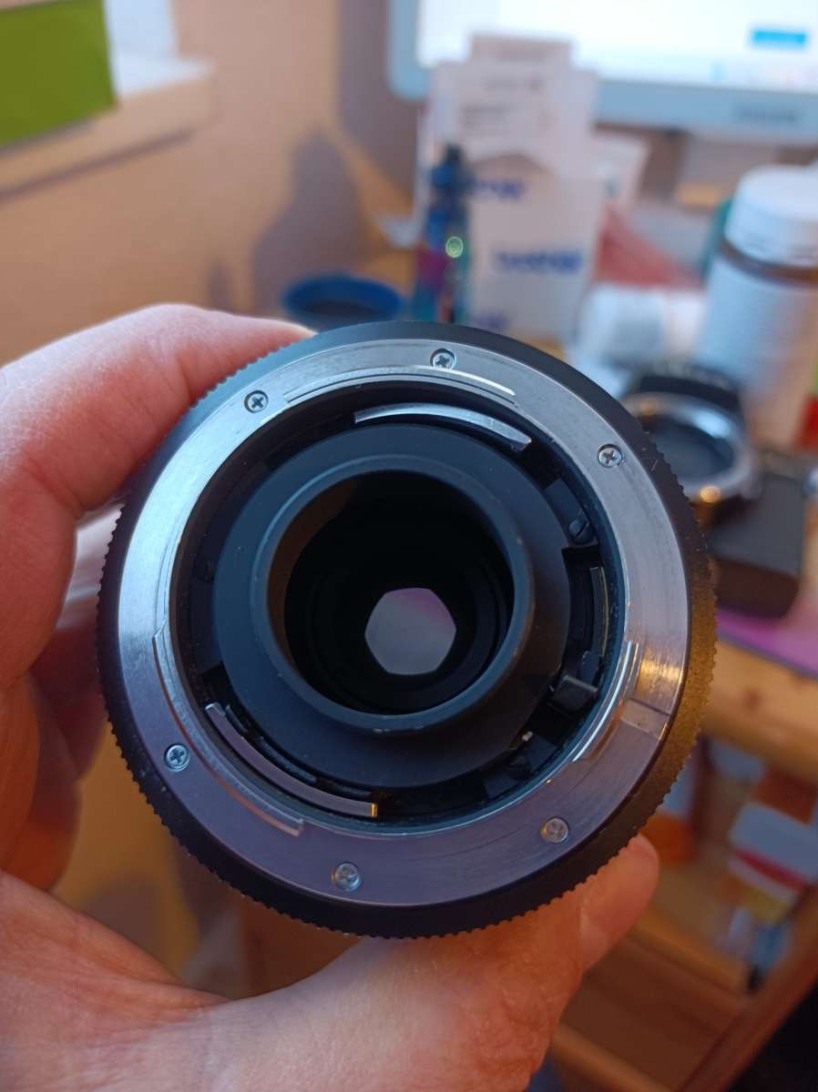
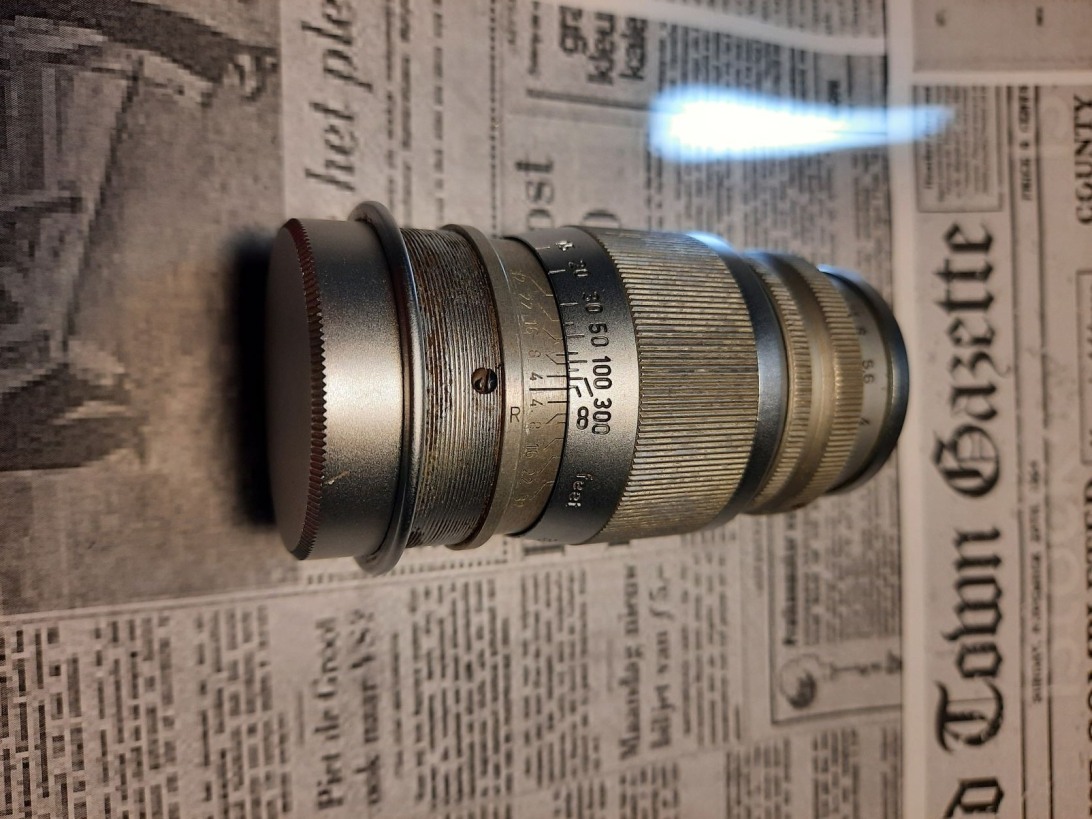
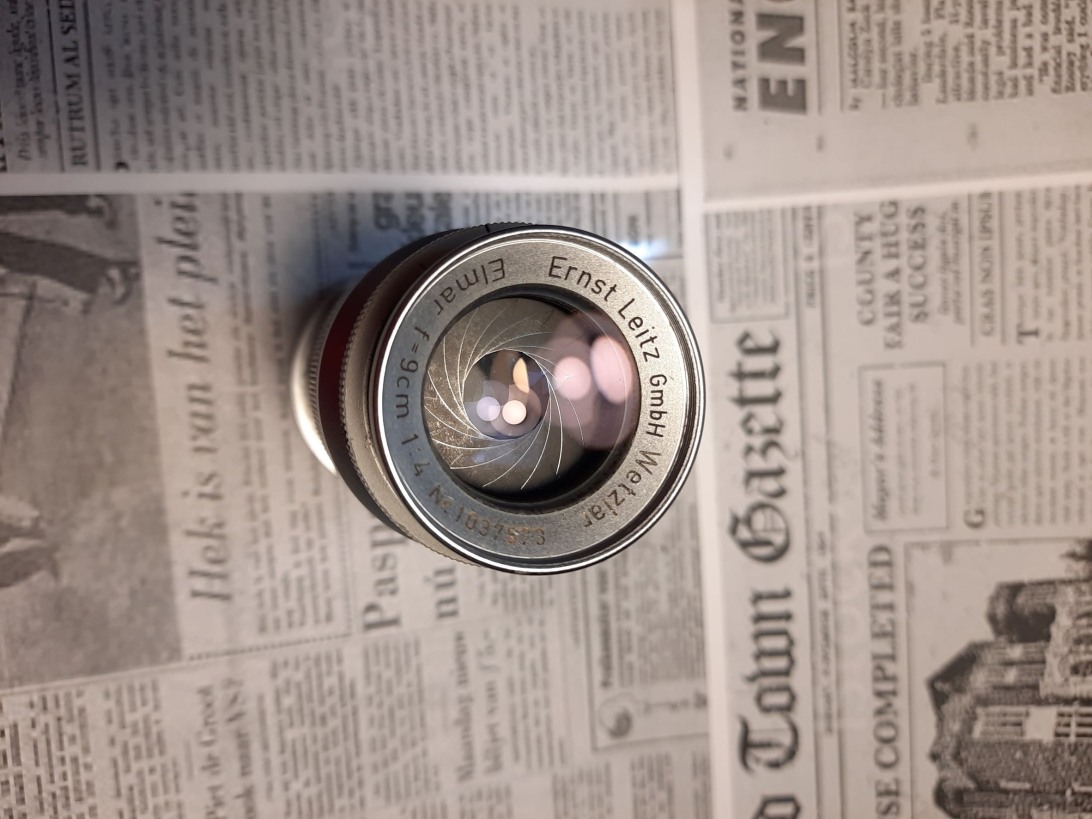


.jpg.0771d1ccd11a36261efc9fbd359ed0f8.jpg)
.jpg.96646e3afda28703240cfb223fb05d1f.jpg)
.jpg.3d5b3d2c8f74570614fb9c8e522e2969.jpg)

